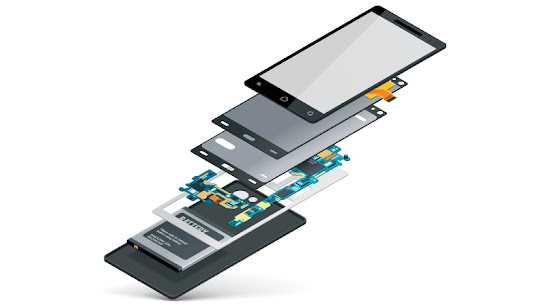What is IPS Display in Mobile?
The approach of the cell phone essentially created from the possibility of a full touch screen. After a full touch screen was assembled, presently the following assignment was to redesign it. That point, headways were made with the LCD. To start with, it was made capacitive. After which it made ready for the overwhelming majority more progressions. Furthermore, presently there are two classes of screens. One is the LCD and the other is LED. The most redesigned form of LCD is brought In-plane exchanging (IPS), while the updated variant of LED is known as AMOLED and Super-AMOLED. What's more, my further discussion will generally be comprising of Super-AMOLED versus IPS LCD. Both have various advantages and disadvantages.
Super-AMOLED is fundamentally an updated augmentation of AMOLED. Anyway, first, I will make sense of what is AMOLED?
AMOLED represents Active Matrix Organic Light-Emitting Diode. It is a move up to OLED (natural light-transmitting diode). This innovation utilizes natural mixtures which produce or radiate light when open to an electric flow. No doubt, it eliminates the backdrop illumination which prompts less power utilization. Its an altered form of the IPS show. There are numerous upgrades. Nonetheless, it actually lingers behind in certain areas. The tones are lively and more shining in AMOLED show. The blacks in the screen are more obscure on the grounds that parts of the screen can be successfully switched off. Hypothetically, it additionally implies a substantially more superior battery duration.
It represents very dynamic framework natural light-emanating diode. One characteristic of Super AMOLED show that recognizes it from the AMOLED is that the layer which is liable for contact is embedded straightforwardly into the screen as opposed to existing as a totally different layer. This specific perspective recognizes Super AMOLED from AMOLED.
Q. What is an IPS LCD?
IPS LCD is inseparable from Super LCD. It represents in-plane exchanging fluid gem show. It's a title given to a LCD screen that purposes in-plane exchanging (IPS) boards. LCD screens use a backdrop illumination to create light for every one of the pixels, and every pixel shade can be switched off to change the brilliance. Super LCD was designed to settle gives that accompany TFT LCD (slim film semiconductor) showcases to help a more extensive review point and much better tone and differentiation.
The LCD uses a captivated light which then, at that point, courses through a variety channel. Even and vertical channels are available on each side of the fluid gems which control the splendor and whether every pixel is on or off.
Which one is Better and Why?
While looking at the two kinds of show, I have gotten to a place that favoring one over the one more without a point by point study will be crooked. The two presentations have contrasts as well as certain similitudes. What's more, in the end any inclination can be viewed as an assessment. However, there are a few noticeable contrasts among them which can be useful in looking at S-AMOLED versus IPS. Like, as I would see it, in the event that you think about more profound blacks and more brilliant varieties, your decision would be the S-AMOLED. As the previous is popular for dynamic tones. In any case, in the event that you lean toward more honed pictures over brilliant, IPS LCD would be a superior choice. Hence, the assessment can differ while favoring one among the two showcases.
Presently, I will analyze the two from various viewpoints. What's more, this examination depends on ongoing tech updates of 2020.
IPS is better in following ways:
As the LCD screens have backdrop illuminations, which seems like the pixels are nearer together, making a general more honed picture with more normal impact. While then again AMOLED screens might appear to be over-soaked or unreasonable. In the wake of involving the AMOLED for a while, the whites might show up marginally yellow.
AMOLED screens dealt with an issue of 'Consume In'. Because of which pixel quality crumbles over the long haul. However, this issue can be limited as the innovation will move along.
Power Consumption:
The IPS-LCD shows contain a backdrop illumination that uses more power than an ordinary LCD screen. From this position, it is suggested that IPS LCD utilizes more power than AMOLED.
Notwithstanding, the previously mentioned position can here and there be viewed as confusing. Since it additionally relies on the utilization of the screen. In the event that every one of the pixels are eased up at like clockwork, there is plausible that AMOLED will utilize more power than an IPS LCD. Also, every pixel of a Super AMOLED show can be tweaked for each variety prerequisite. Accordingly, power utilization in certain circumstances may be higher than the IPS LCD.
Value Comparison:
An IPS LCD screen contains a backdrop illumination while S-AMOLED screen doesn't. However, the previous has an additional a layer that supports contact while Super AMOLED show has an inherent touch. As there are improved tones and a piece unrivaled quality is utilized in the assembling of S-AMOLED, thusly, obviously Super AMOLED is significantly more costly.





0 Comments